Last Sunday 26th of July we ran our first Pelagic Birding Trip in Andalucia of 2020. This way, we continued the pelagic trips in the Gulf of Cadiz we started in 2019.
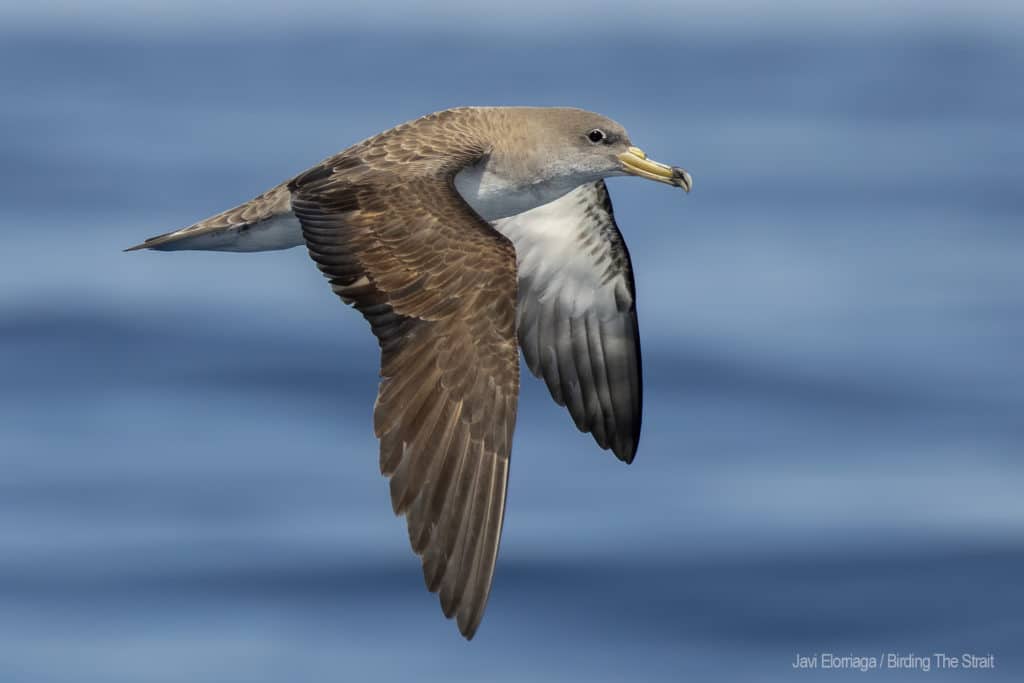
At 7:45 AM the group met at the port of Rota (Cádiz): eight avid Spanish and British birders arrived from Cádiz, Málaga, Granada, Almería and Gibraltar. While the group finished its breakfast, Javi loaded 40kg of fine chum to the boat. A few minutes after 8:00 we set sail West towards the Important Bird Area “Golfo de Cádiz” (Gulf of Cádiz), between the coast of Doñana National Park and the Strait of Gibraltar.
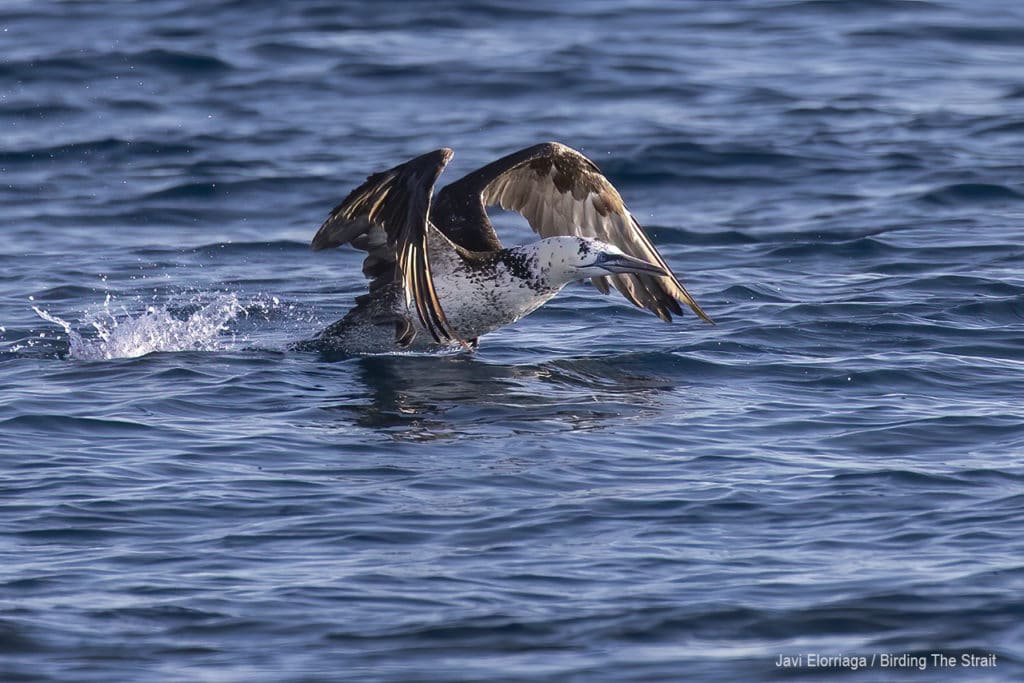
A gentle breeze of “poniente” created very agreeable and calm sailing conditions. As usual, the first miles were calm in terms of birding as well. A few distant Audouin’s Gulls and Sandwich Terns made us lift our binoculars for the first time. The warming up continued with the first Balearic Shearwaters of different colour patterns (we will come back to these birds later), an immature Atlantic Gannet and a Pomarine Skua aggressively Kleptoparasiting a group of Cory’s Shearwaters. Curiously, a migrant Hoopoe flying with shearwaters made the anecdote of the day.

Shearwaters Galore
We noticed a large concentration of shearwaters on the horizon. Without hesitation we headed towards them. We soon were literally surrounded by hundreds of Cory’s Shearwaters (lato sensu), both in flight and in dense rafts over the water surface. We estimated no less than 400 individuals, many of them at very close range. At this point, it was difficult to fix the target for our cameras. It did not take long for one of our first big targets to show up, a Great Shearwater! Almost simultaneously, a highly unexpected Manx Shearwater took off right in front of us!
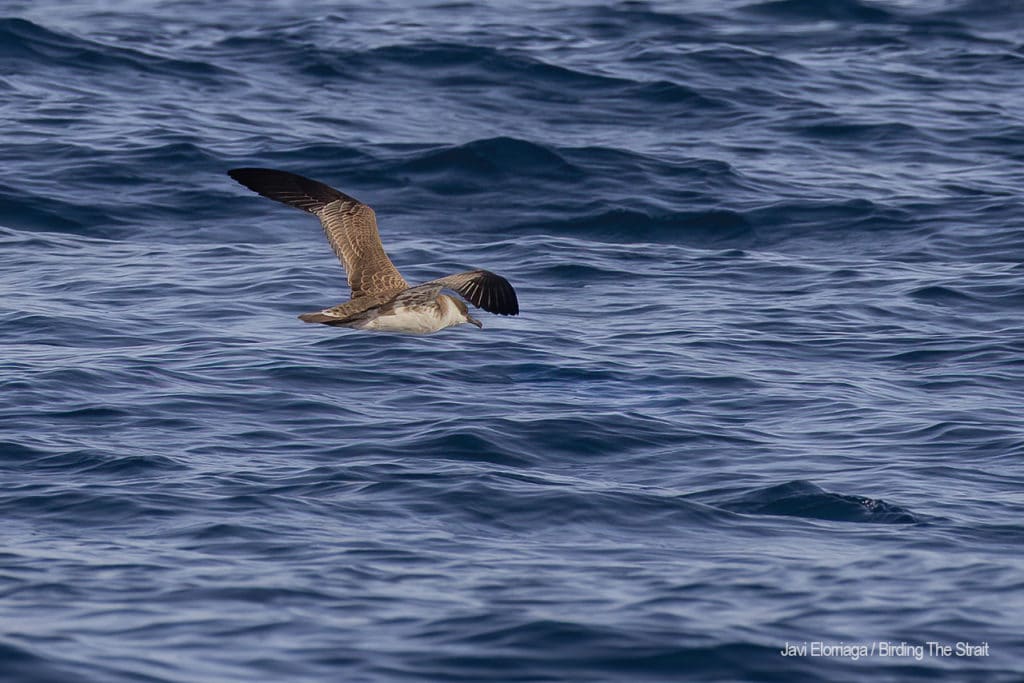
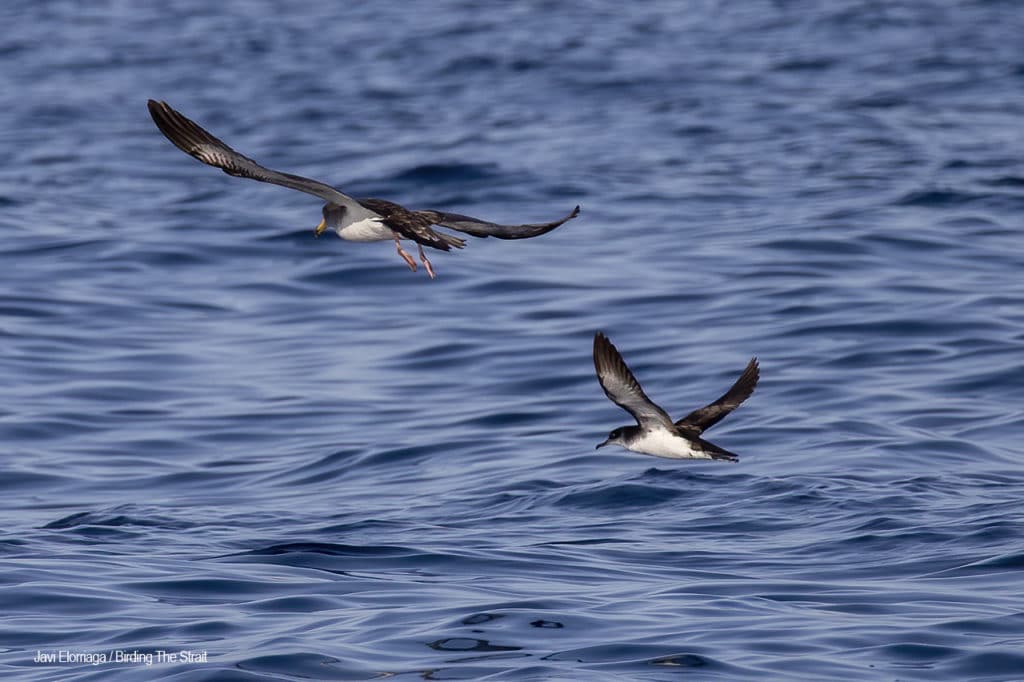
Remarkably, both species, specially the later, are scarce in Andalusian waters. Indeed, these might well be among the first records for the species in July in Andalusia. It is important to highlight here that, specially dedicated pelagic birding in Andalucia and scientific surveys in summer period have been carried out only in recent years. Therefore, a more regular presence of these and other pelagic seabirds might have been partially overlooked. Indeed, contributing to filling this gap of knowledge is an added incentive in our pelagic trips off the Gulf of Cádiz.
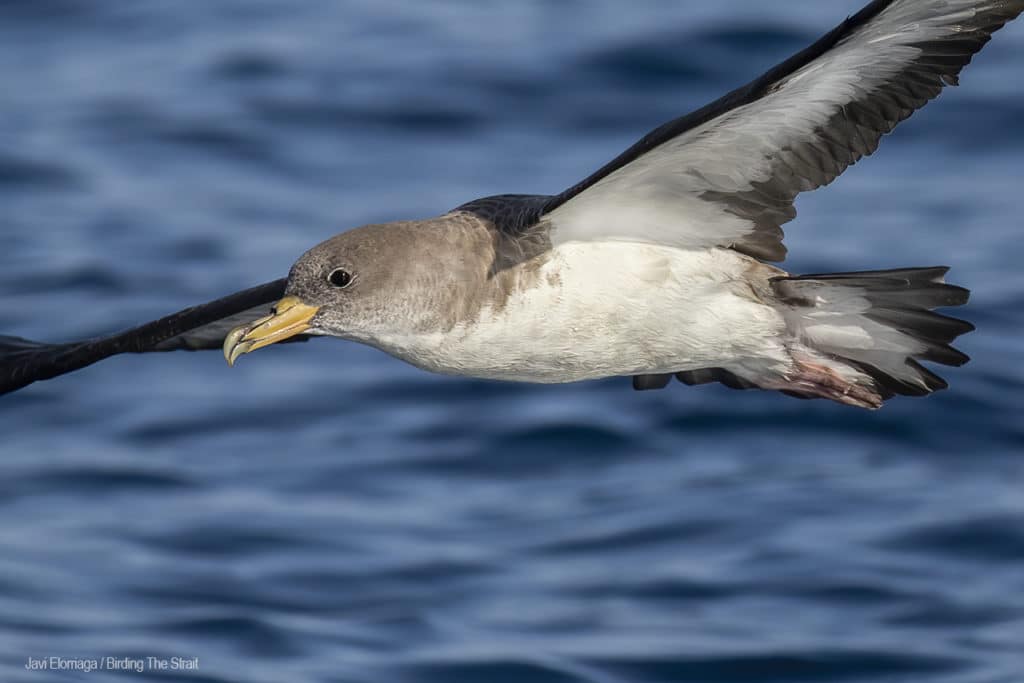
About one hour and hundreds of pictures later, we decided to keep sailing west into deeper waters. The show had been great so far!
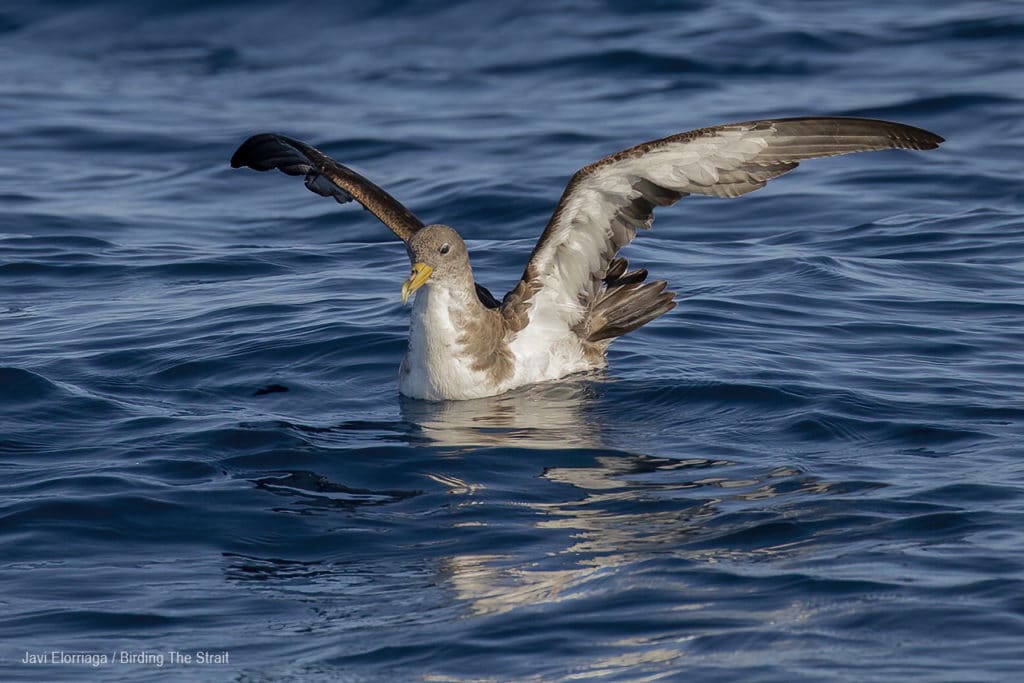
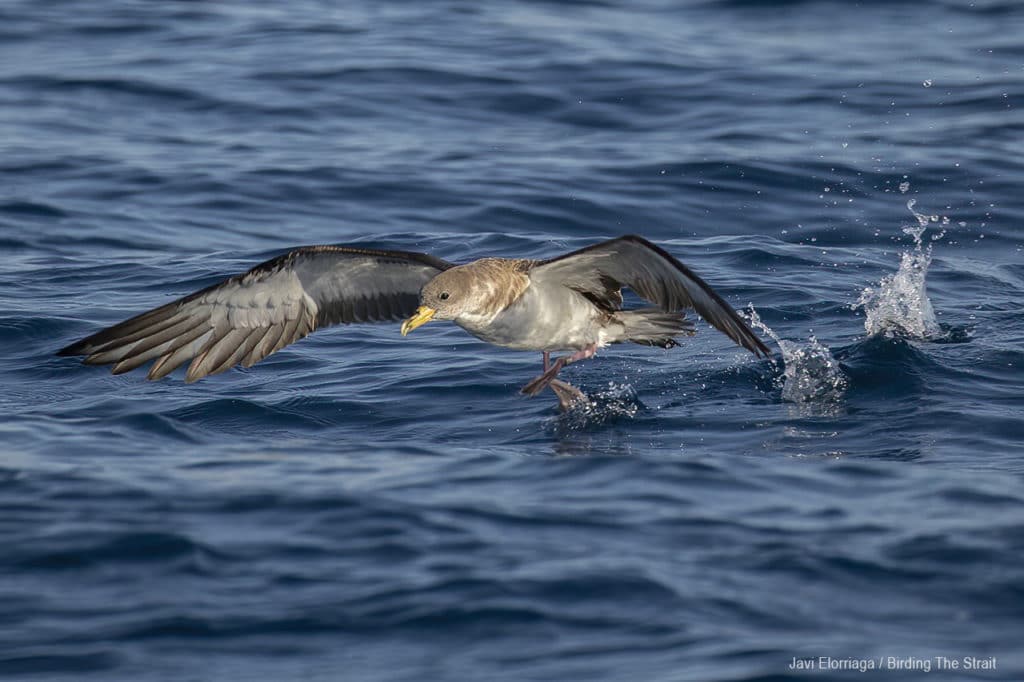
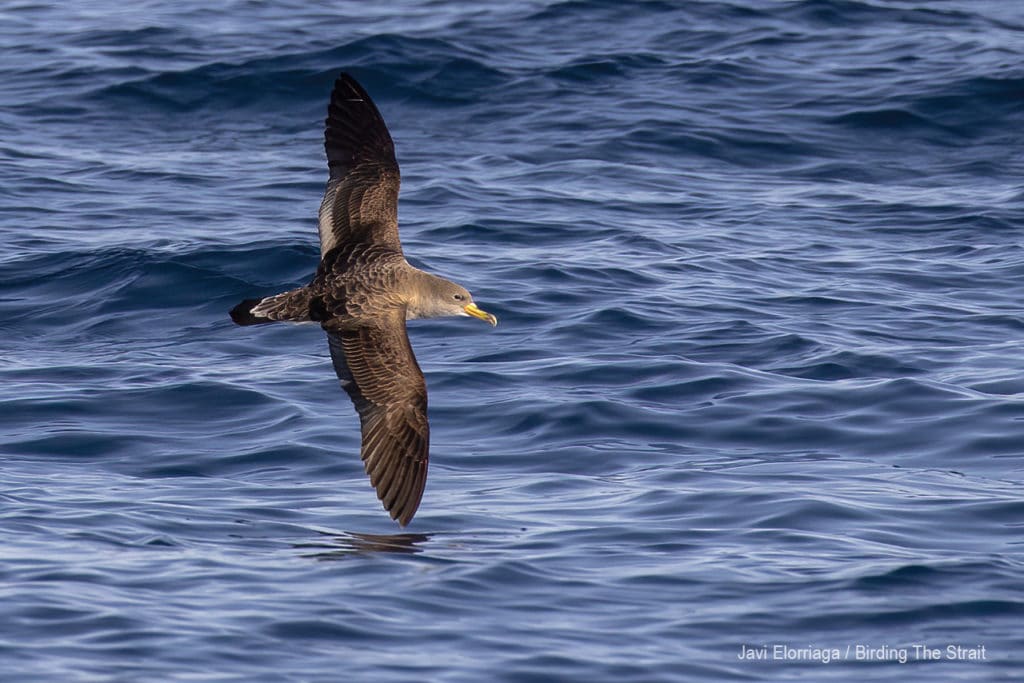
We agreed that, most probably, there were two different Great Shearwaters. We also realised that one of the first Balearic Shearwaters we had photographed could be a Mediterranean Yelkouan. However, the later examination of the picture and exchage of opinions with fellow birders lead us to leave its ID open as P. mauretanicus / yelkouan (see the comments on the picture above).
No two pelagics are alike!
We reached approximately 15 nm offshore. Here, the presence of birds notably decreased. We carefully scrutinized the ocean with the hope of finding petrels, but with no luck. We turned north, towards the Guadalquivir River Mouth. A few Gannets and scattered Balearic Shearwaters, a couple of Great Skuas and a single Pomarine, were the only reward. Unlike in our previous pelagics, the use of chum proved unsuccessful. Remarkably, we found a nearly total absence of gulls throughout the day
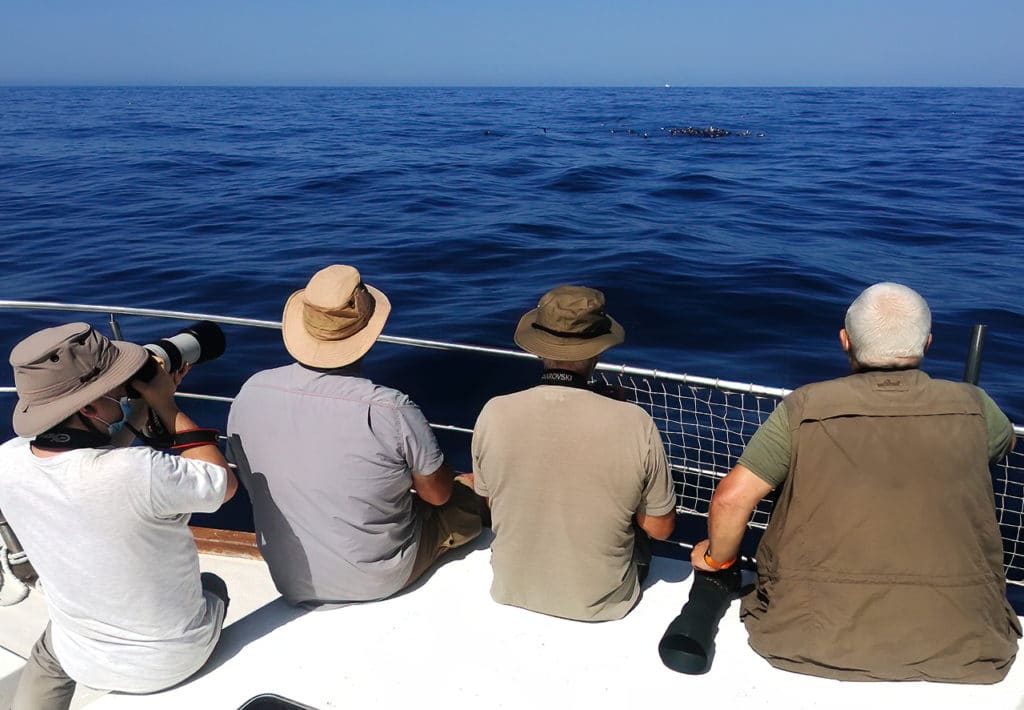
At this point, we decided to return to the shearwater’s hotspot. This time, we found the birds dispersed over a broader front, although still providing an excellent show. The presence of important schools of anchovies grabbed bird’s attention, which seemed to ignore our presence. Hundreds of Cory’s were eagerly fishing and disputing the catches. We could see them immersing their heads into the water to locate their prey and even hear their nasal calls.
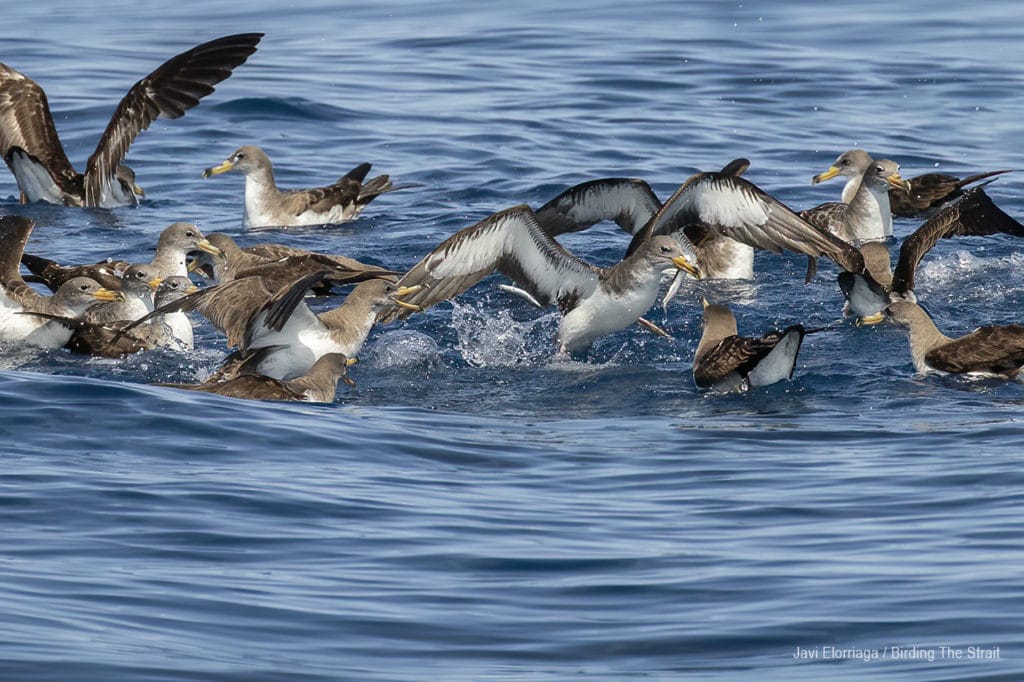

This was yet another great moment for maximum enjoyment both to observe and photograph large numbers of shearwaters and a few skuas at very close range.
Cory’s Shearwater vs Scopoli’s Shearwater: an identification challenge
Later on, going through the pictures, we were able to see that among the very numerous Cory’s of the borealis type, there were indeed a few typical Scopoli’s diomedea as well. It is important to note here that there are taxonomic issues regarding the split of Scopoli’s Calonectris diomedea, Cory’s C. borealis, and Cape Verde C. edwardsii, shearwaters, which until recently were considered subspecies of C. diomedea.
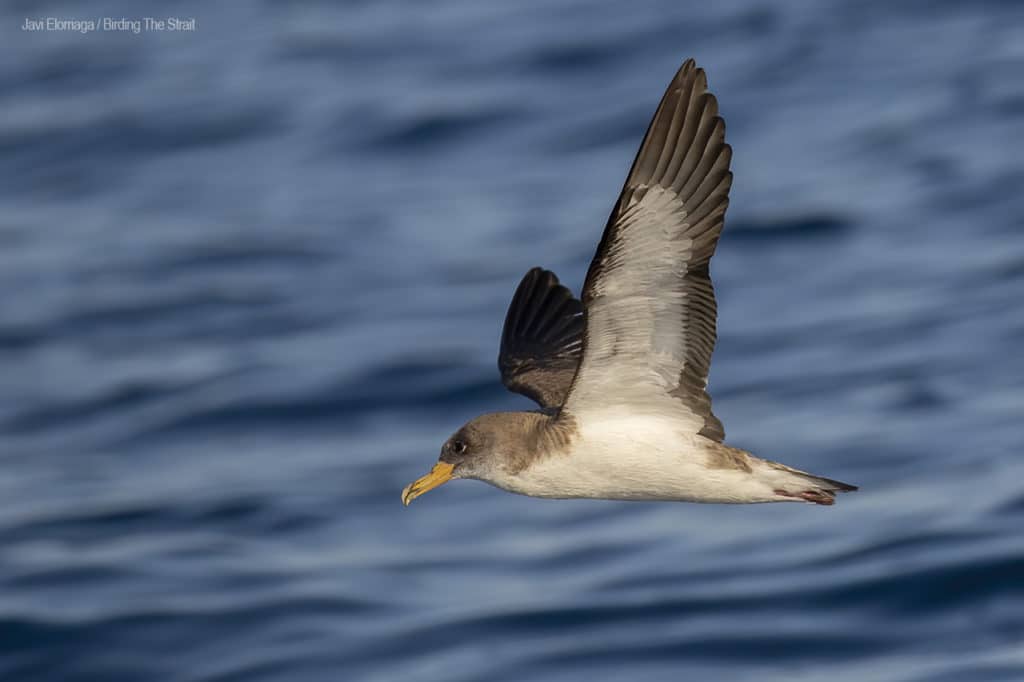
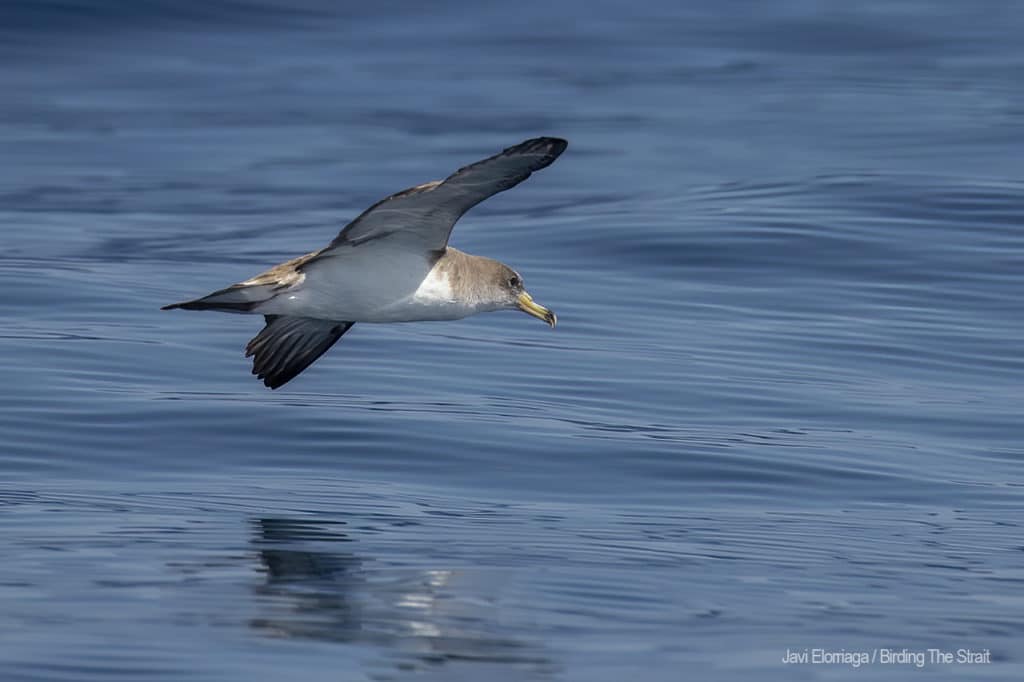
Worn Balearics
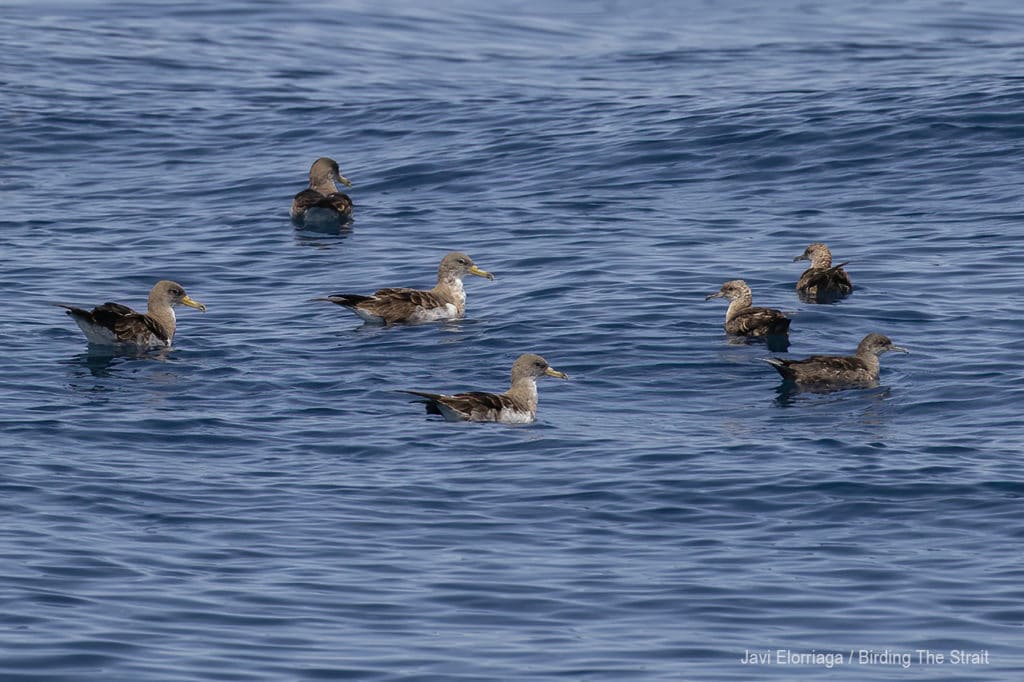
We got close views of Balearic Shearwaters too. Most of them were adults showing a dreadful plumage state. This was the result of the ongoing moult of flight feathers and the heavy wear in their body feathers. Probably, accessing to their nests in narrow and winding deep burrows leads to extreme wear by the end of the breeding season. As a result, several birds looked strikingly whitish towards the front of their body. Back in 2011, Javi wrote a short note in Dutch Birding describing an aberrant (brown) Balearic seen in the Strait of Gibraltar. He also reviewed other published cases of abnormal colour patterns. That time, the bird in the picture would have been an interesting case study.
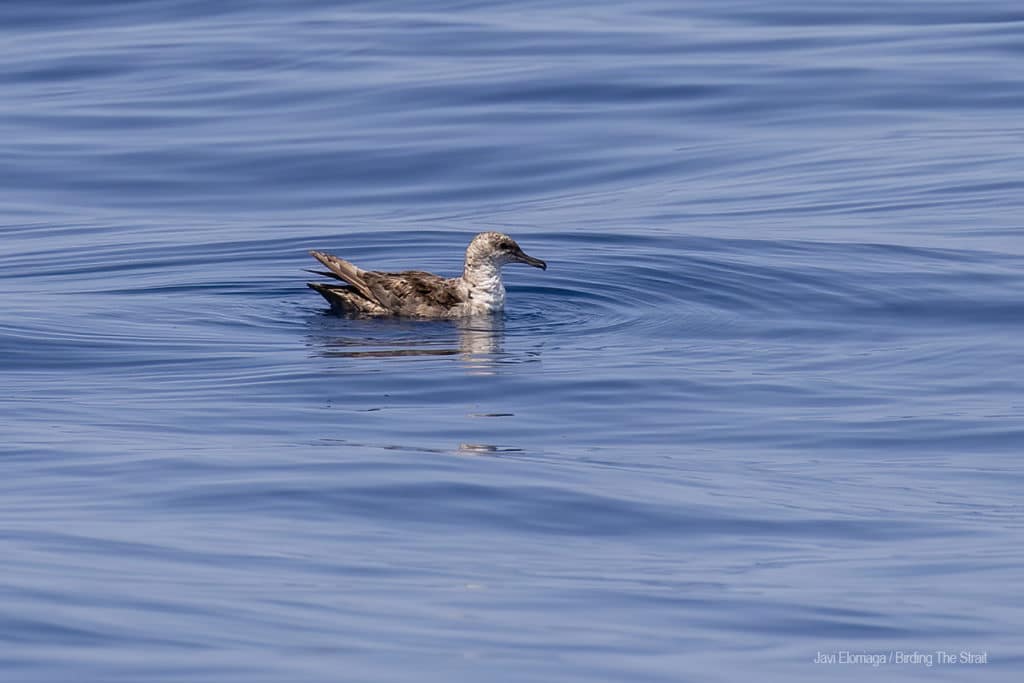
Around 13:00 we decided to call it a day and head back to the port. On the way back we still came through a few more Balearics, Gannets and a last Bonxie.
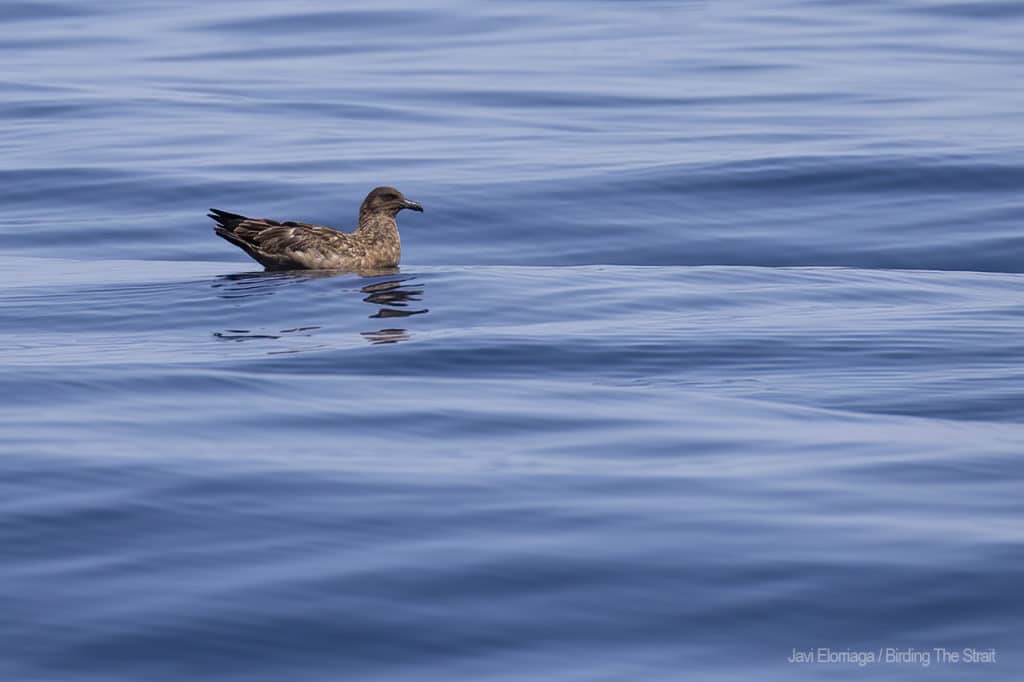
We sat in the shade, weary but satisfied and already planning our next pelagic. The moment was “enlivened” thanks to the carefully selected music playlist of our captain and DJ Pepe, including a great selection of greatest hits from the 70s and 80s!
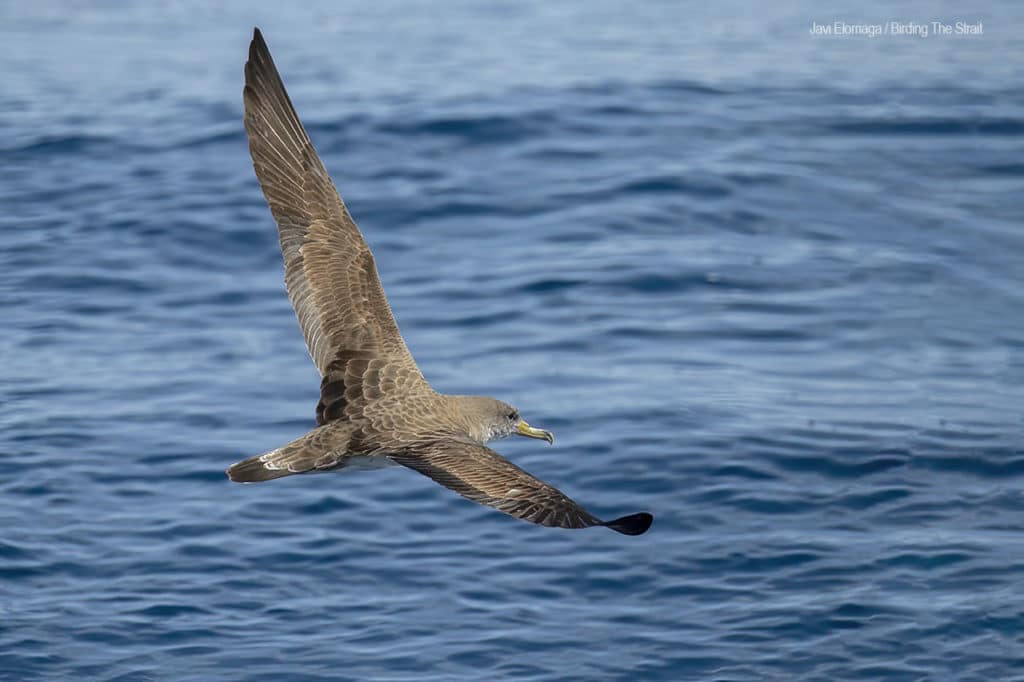
We disembarked at 14:00 in Rota. Overall, we had sailed for six hours in a 40 nm loop. We had certainly achieved our main target: enjoy quality encounters with seabirds. Moreover, we got records of interest, tick some targets, dip out others and had a little fun. This is how pelagics work!
We celebrated the experience around some refreshments at the restaurant of the port and some decided to continue birding in the nearby Bonanza saltpans.
Shearwater controversy
The field identification and taxonomy of Balearic/Mediterranean and Cory’s/Scopoli’s Shearwaters is, to some extent, still unclear. For those of you willing to get deeper into the matter, we recommend the following publications:
- Multimedia Identification Guide to North Atlantic Seabirds: Shearwaters. Boob Flood and Ashley Fisher. July 2020.
- Petrels Night and Day. A Sound Approach Guide. Magnus Robb and Killiam Mularney.
- Plumage variability and field identification of Manx, Yelkouan and Balearic Shearwaters. British Birds. Gil-Velasco et al. September 2015.
- The status of Cory’s Shearwater in the western Mediterranean Sea. Robert Flood and Ricard Gutierrez. Dutch Birding. January 2019.
Masked Birders
Given the Covid-19 restrictions, and following our protocol of contingency, this year the number of participants onboard has been reduced to nine, including the crew. In addition to this, we used face masks and hand sanitizers during the whole trip.
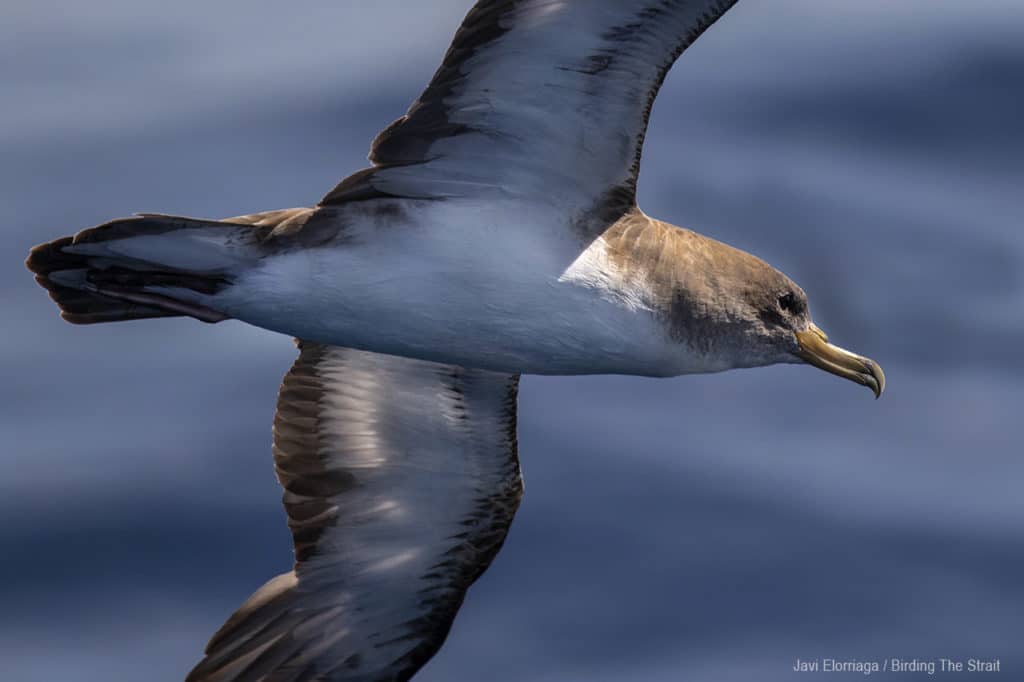
Pelagic birding in Andalucia
We have programmed several pelagic birding trips in Andalucia, off the Gulf of Cadiz, during the next months. We have a limited number of spaces. If you want to keep informed please subscribe to our online newsletter and drop us an email.
We look forward to meeting you onboard!
We are very grateful to all the friends who have helped us in different ways: Alex Colorado, Jose Luis Garzón, Rosa Rodríguez, Guillermo Rodríguez, Ricard Gutierrez, Miguel McMinn, Bob Flood and Juankar Andrés.